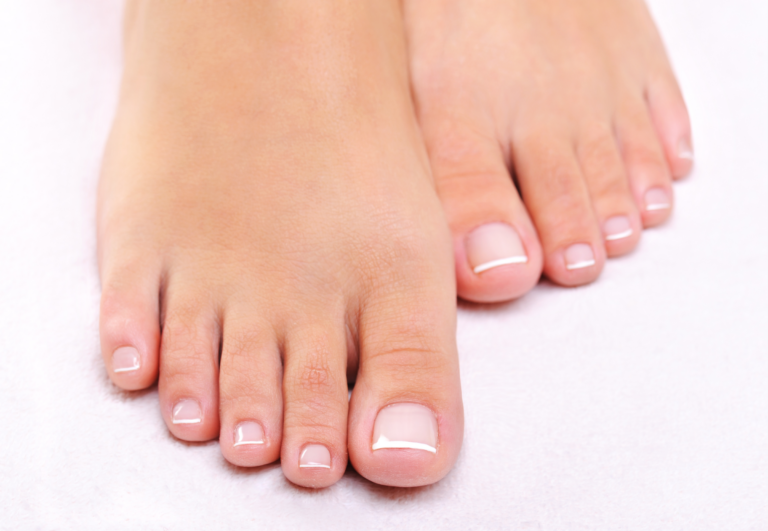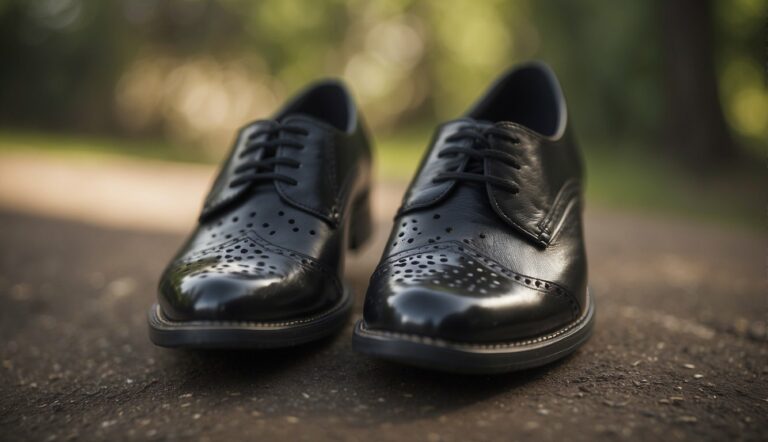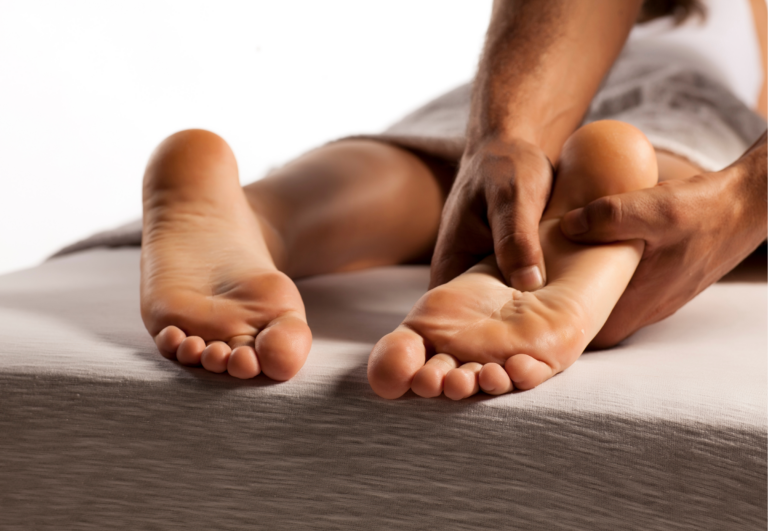How to Use Toe Spacers for Gout Relief: Simple Steps for Comfort
Toe spacers have emerged as a helpful tool for individuals seeking comfort from the discomfort caused by gout. As someone well-versed in the use of toe spacers, I can attest to their effectiveness in creating the necessary space between toes, which can help alleviate pressure and reduce pain. These simple yet ingenious devices work by gently separating the toes, promoting a more natural toe alignment which can be beneficial for those experiencing the sharp pain associated with a gout attack.
While toe spacers can offer temporary relief for gout sufferers, it’s important to remember that they are not a cure for gout itself, which is a form of inflammatory arthritis characterised by sudden, severe attacks of pain, swelling, redness, and tenderness in joints. The utilization of toe spacers should complement the medical treatment advised by a healthcare provider, as they can assist in managing symptoms and improving foot function in the midst of an attack.
When incorporating toe spacers into your routine, it’s crucial to start with short periods of wear and gradually increase the duration as your toes adjust. Always listen to your body and stay in communication with a healthcare provider to ensure that the use of toe spacers is appropriate for your specific health condition. Keep in mind that the primary aim is relief and improved foot health, and when used correctly, toe spacers can be a simple, non-invasive adjunct to your gout management strategy.
How to Use Toe Spacers for Gout Relief
Toe spacers can potentially provide relief for individuals experiencing gout in their feet, particularly in the big toe, which is a common site for gout attacks. Gout is a form of arthritis characterized by sudden, severe attacks of pain, swelling, redness, and tenderness in the joints. Here’s how toe spacers might help:
1. Reducing Pressure on the Joint
Toe spacers can help by reducing the pressure on the affected joint. By gently separating the toes, they can minimize the stress on the big toe joint during walking or standing, which may alleviate some discomfort associated with a gout attack.
2. Improving Alignment
Gout can cause significant pain and swelling, leading to difficulties in maintaining proper toe alignment. Toe spacers work to realign the toes to a more natural position, which can help reduce pain and prevent further joint stress.
3. Enhancing Circulation
By separating the toes and preventing them from overlapping or squeezing together, toe spacers can improve circulation in the feet. Better blood flow may aid in the reduction of inflammation and help in the healing process during and after a gout flare-up.
4. Encouraging Movement
Although rest is important during an acute gout attack, gentle movement can be beneficial for recovery. Toe spacers can make movement less painful, encouraging gentle toe exercises which can help maintain flexibility and reduce stiffness in the toes.
It’s important to note that while toe spacers may provide some symptomatic relief, they are not a cure for gout, which requires medical management. Lifestyle changes, dietary adjustments, and medications prescribed by a healthcare provider are the primary means of treating and preventing gout attacks. If you have gout and are considering toe spacers, consult with your healthcare provider to ensure they are appropriate for your condition and to discuss a comprehensive treatment plan.

An Overview of Gout and Its Causes
Gout is a type of arthritis that often starts in the big toe, and is caused by high levels of uric acid in the blood which can form into sharp crystals in the joint. If you’re experiencing gout symptoms, using toe spacers might offer some relief by helping to align your toes and reduce pressure on the affected joint.
The Role of Uric Acid and Inflammation
Uric Acid
- Source: Byproduct of purine breakdown.
- Problem: Excessive levels can form crystals in joints.
Inflammation Symptoms
- Swelling: Affected area becomes inflamed.
- Pain: Severe discomfort, particularly in the big toe.
Uric acid is typically excreted through the kidneys, but when it accumulates, it can lead to inflammation causing severe pain and swelling. This accumulation can be linked to dietary choices like consuming high-purine foods such as red meat and seafood, or drinks high in fructose and certain types of alcohol.
Identifying Risk Factors and Triggers
Key Risk Factors
- Diet: High intake of purines, fructose, and alcohol.
- Weight: Obesity can increase risk.
- Health: Kidney disease impacts uric acid removal.
- Family: Genetic predisposition due to family history.
Common Triggers
- Dietary choices (e.g., seafood, red meat)
- Alcohol consumption
- Fructose-rich drinks
While managing weight and diet can help reduce the risk, medical conditions, including kidney disease and changes during menopause, can also play significant roles. Being informed of these risk factors and triggers is essential for individuals prone to gout or with a family history of the condition.
Typical Medical Diagnosis and Treatment Options for Gout
When dealing with gout symptoms, it’s crucial that a professional diagnosis and effective treatment plan be established. I’m here to guide you through the nuances of obtaining a medical diagnosis and understanding the treatment options available.
Professional Diagnosis through Imaging
A doctor’s assessment typically begins with a review of medical history followed by a physical examination. I understand that imaging tests such as an X-ray can then be ordered to rule out other conditions that could be causing joint pain.
The imaging can sometimes show urate crystals around joints or evidence of joint damage related to gout. If gout is suspected, the doctor may recommend a joint fluid test where fluid is extracted from the affected joint and examined for urate crystals.
Medications and Their Effects
For managing gout, medications are prescribed to reduce pain and inflammation. Based on my expertise with toe spacers and how they complement treatments, I can say that understanding the medications prescribed can benefit the management of gout symptoms significantly.
Here’s a straightforward list of the common medications and their effects:
- Nonsteroidal anti-inflammatory drugs (NSAIDs): Can quickly relieve the pain and swelling during a gout attack.
- Corticosteroids: Like NSAIDs, they combat inflammation and pain, often used if you can’t take NSAIDs.
- Colchicine: Specifically designed for gout, it’s very effective but may cause side effects such as nausea or diarrhea.
- Allopurinol: This medication prevents gout attacks by lowering uric acid levels.
- Febuxostat (Uloric): Acts like allopurinol but is often used if allopurinol isn’t tolerated.
- Probenecid: Helps kidneys remove uric acid from the body, preventing crystals from forming.
Remember, only a licensed healthcare provider can diagnose gout and determine the best treatment course. These medications should be used in conjunction with a doctor’s advice.
Lifestyle Adjustments and Home Remedies
Managing gout often involves combining medical treatments with lifestyle changes and home remedies. Through my experience with toe spacers and familiarity with gout, I’ve seen how these adjustments can help alleviate symptoms.
Dietary and Lifestyle Changes
Diet: A key strategy in managing gout symptoms is altering your diet. Let’s focus on:
- Reducing consumption of high-purine foods: Offenders like red meats and seafood can trigger gout flare-ups. Aim for a well-balanced diet rich in vegetables and fruits.
- Hydration: Increasing water intake helps flush out uric acid, the culprit behind gout attacks. Strive to drink at least 8 glasses of water daily to maintain good hydration levels.
| Lifestyle Changes | Suggested Actions |
|---|---|
| Exercise | Moderate exercise can assist in achieving a healthy weight, which puts less stress on your joints. Avoid high-impact workouts during flare-ups. |
| Weight Management | Maintaining a healthy weight can reduce the frequency of attacks and alleviate pressure on the joints. |
Natural Relief Methods
Home Remedies: Alongside dietary tweaks, some home remedies can offer relief:
- Cherry Extract: Some people find that cherry extract can reduce gout flare-ups due to its anti-inflammatory properties.
- Toe Spacers: Using toe spacers can help by allowing proper alignment of joints, potentially reducing stress and aiding in symptom relief. Remember to wear them as recommended.
| Natural Relief Method | Description |
|---|---|
| Toe Spacers | Used to correct toe alignment, providing spacing that can help in easing joint stress associated with gout. |
| Cherry Extract | May lower uric acid levels and provide anti-inflammatory effects beneficial for gout sufferers. |
Remember, I’m sharing insights based on experience, not medical advice. Always consult healthcare providers for personalized treatments.
Toe Spacers as a Remedial Tool
Toe spacers can be an effective non-medical option to address discomfort in the feet caused by gout and other foot-related issues by realigning the joints and easing the pressure on the big toe. Let’s explore how to select the right toe spacers and the proper guidelines for their use.
Selecting the Right Toe Spacers
When choosing toe spacers:
- Material: Opt for a soft, flexible silicone material that molds comfortably to the contours of your feet.
- Size and Fit: Ensure they fit snugly but not too tightly between the toes.
The right toe spacers should alleviate pressure without causing additional discomfort, making walking easier and providing relief from symptoms associated with hammertoe, bunions, corns, and calluses.
Proper Usage Guidelines
To correctly use toe spacers:
Insertion:
- Start by washing your feet and the toe spacers.
- Insert the toe spacer gently between your toes, with a focus on the big toe for gout relief.
Duration:
- Begin with wearing toe spacers for short periods, such as 10-15 minutes, and gradually increase as comfort allows.
Frequency:
- Regular use can help maintain proper toe alignment and reduce pressure on the joints.
Consistent use in accordance with these guidelines can contribute to the overall comfort and health of your feet.
When to Seek Professional Care
When using toe spacers for gout, it is crucial to know when to seek help from a healthcare professional. This section explains how to recognize serious symptoms and when to consult with a provider.
Recognizing Symptoms and Complications
Symptoms that warrant immediate medical attention include:
- Severe or intense pain: If gout flares lead to unbearable pain that toe spacers do not alleviate, it’s a sign to see a doctor.
- Swelling, redness, warmth: Persistent inflammation and heat around joints may indicate an infection or worsening gout.
- Stiffness and tenderness: Difficulty moving or extreme sensitivity in the toes can signify that the gout is not under control.
Consultation with a Healthcare Provider
When to contact a podiatrist or DPM:
- Frequent flare-ups: Having frequent gout attacks even while using toe spacers means professional intervention may be necessary.
- Complications: Symptoms like kidney stones or suspected infections linked to gout should be addressed by a healthcare provider.
- No improvement: If symptoms persist despite using toe spacers, seek advice from a podiatrist or other relevant medical professional.





